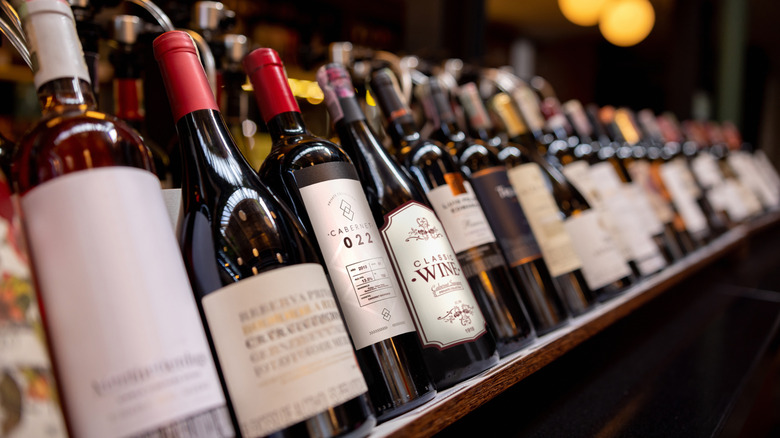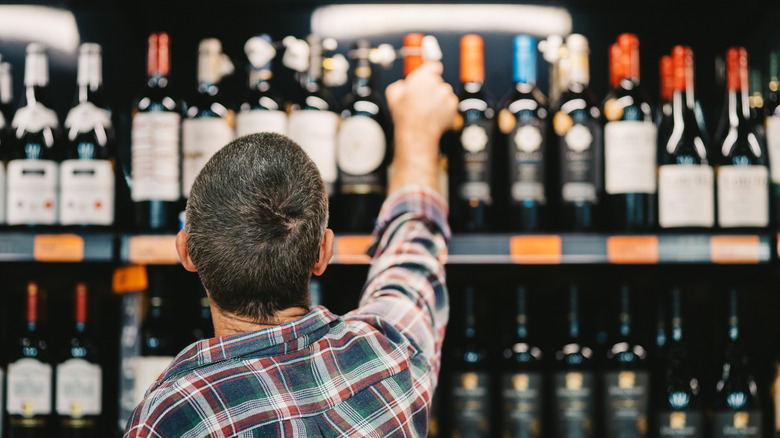An Expert Explains Why You Shouldn't Be Too Quick To Pick Up Wine With A Flashy Label
You can't judge a book by its cover, yet that's exactly what we're asked to do whenever we pick out a bottle of wine. Do we go with the modern artistic label or the more elegantly traditional one? Here to help us figure out what to look for in our wine labels is Amanda Davenport, General Manager and Beverage Director for Noisette Restaurant and Bakery in Denver, Colorado.
"Sometimes it's hard to choose a wine by the label," Davenport agreed. "Most higher-end wines have a more classic or traditional label, but some winemakers are starting to have more fun with their artwork on the bottle." So, we can expect more artistic labels to be coming from newer wineries, potentially with less experience, and the innovation on the bottle could indicate innovation in the winemaking process for those of us who enjoy trying something new. A classic wine label may indicate a more reliable adherence to winemaking tradition, meaning it might be less of a gamble to try.
The problem with overly artistic wine labels is that they often lack the information you need to decode a wine. "I'd say the most important information on the label would be the region, which can likely tell you the most — varietal and style," Davenport continued. That being said, some creative labels will still give you the details on region and grape varietal, so make sure to give the label a closer look even if the creative marketing is sending red flags.
Don't believe the hype
When we see wines with exceptionally eye-catching labels, our instinct might be to immediately reach for them. It doesn't help that some of the best wines come tucked within a clever and colorful bottle. Of course, we've also had some really mediocre wines that we probably would have enjoyed more had the label not set our expectations so high, which puts us in a bit of a predicament.
The labels on wine bottles are important because they tell you about the wine itself, but they can also be misleading. Even traditional labels don't always equate to good wine. That's why you should use what information the label does give you to make an educated guess based on what you've enjoyed in the past. A Chilean wine isn't always better than a French wine, but you may already know that you prefer one over the other. If the bottle states it's subject to regional regulations, such as an A.O.C., that could indicate the winemaking region has given the winery a stamp of approval that's worth noting. As for the grape varietal, each grape has a distinct flavor profile, and you would do well to remember which ones you enjoy. Maybe you enjoy the rich spice of a Chianti but not the light touch of Pinot Noir — the label is where you find that detail.

